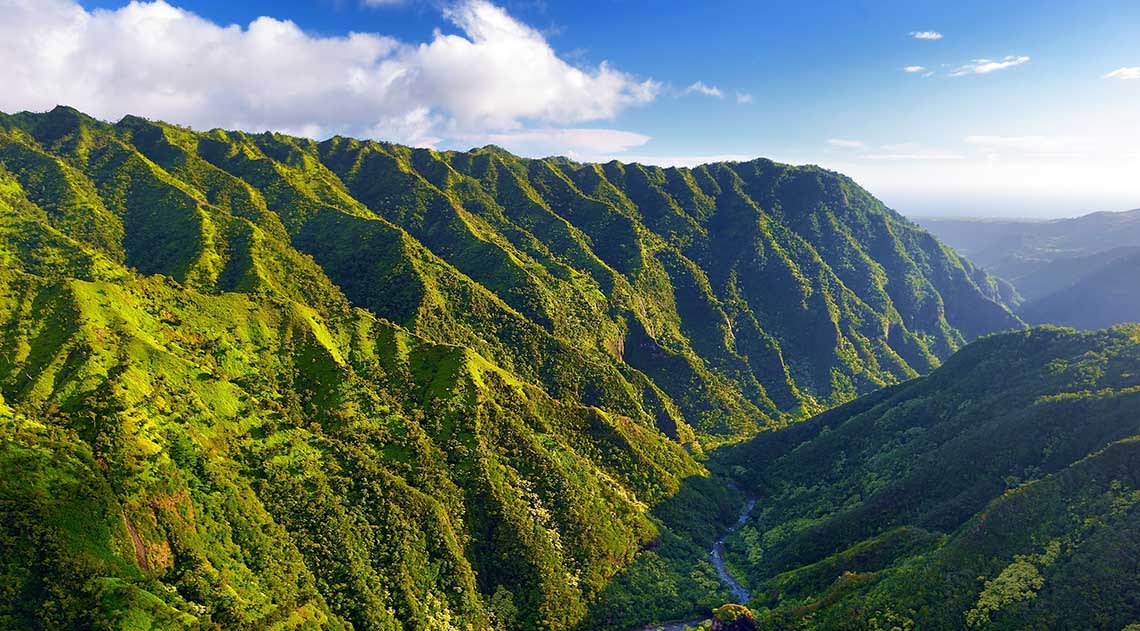Surfing this beautiful pocket of the Pacific Ocean is unlike doing so anywhere else on Earth. And to get the most out of Hawaii in the present, it helps to understand its past. Here, we delve into some Hawaiian history, as well as highlighting the best places to surf and stay today.
Whether you’re a beginner, an avid wave rider or just surf-curious, nowhere on Earth will bring you greater surfing satisfaction than the shores of this Polynesian paradise. The fact that the Hawaiian Islands are further from any continental landmass than anywhere else on Earth has largely contributed to their culture and love of surfing. Being in isolation from the rest of the world afforded ancient Hawaiians the luxury of developing their culture, undisturbed by outside influences. And when those outsiders eventually did show up, they almost spelled an end to a people with more than a millennium of history behind them.
The first Hawaiians arrived on the islands around 1200 years ago, most likely having sailed from Tahiti. Enjoying almost a thousand years of freedom, they developed a society centred on singing, dancing, fishing and something that they called he?e nalu, which means ‘wave sliding’. But wave sliding, or surfing, as it’s now known, was more than just a recreational activity to Hawaiians. Tribal chiefs were selected by being the best surfers in their community and it was practised by both men and women in equal measure. When Captain Cook discovered the islands in the late 18th century, the best surfers on the islands were two sisters. However, it was the arrival of Europeans that almost spelled an end to surfing in Hawaii. Calvinist missionaries voyaged to the islands not long after Cook with the mission of explaining the perils of savage practices like dancing and surfing.
The Hawaiians, fearing eternal damnation, quickly swapped their surfboards for bibles and Hawaiian culture almost vanished. But in 1890, surfing’s saviour was born in Honolulu and his name was Duke Kahanamoku. A five-time Olympic medal winning swimmer, who broke the 100m freestyle record three times in one day, the Duke used his athletic success to popularise his surfing in places like Australia and California, enthralling crowds with demonstrations on their beaches. He even highlighted the surfboard’s practical utility by saving eight men in a capsized Californian boat in 1925. Duke gave Hawaiians a reason to be proud of their heritage and surfing has gone from strength to strength since.
The last decade has seen a renaissance of Hawaiian culture and surfing is more popular than ever. Waikiki, on the island of Oahu, is heralded as one of the best surfing locations on Earth, particularly if you’re learning. A neighbourhood of the capital Honolulu, Waikiki is home to several beaches, one of which, Kuhio Beach, sports a bronze statue of the Big Kahuna himself, Duke Kahanamoku. Surfing lessons are available daily, and nowhere are you better placed to take full advantage of Waikiki’s inviting sea and sand than with a stay at Hilton Hawaiian Village, situated right on the beach by its own lagoon. But Hawaii’s most renowned beach for surfing resides on Oahu’s north shore.
If it’s huge crashing waves that you want to see, head to Pupukea November and April. If you want to surf waves this large, then you most likely won’t need us to tell you about Sunset Beach, but beginners will find its gigantic waves an amazing spectacle, made even more spectacular if you arrive in time for the Vans Triple Crown of Surfing competition, which runs in Hawaii every year between late November and early December. If Sunset Beach sounds appealing, then Turtle Bay Resort, located less than a ten minute drive away, offers a sublime and idyllic retreat to serve as tonic to your intoxicating adrenalized days.
The ancient Polynesian name for Sunset beach is Paumalu, which means “taken secretly” – a reference to the surprisingly quiet way that its powerful waves creep towards the shore. What’s clear when you visit Hawaii and become immersed in its surfing scene is the degree to which being surrounded by the uninterrupted power of the ocean has shaped Hawaiian culture in general. Hawaiians have 16 different words to describe the various forms and breaking patterns of waves. Their traditional cuisine largely centres on seafood and the various tropical fruits and vegetables native to the island, and locals treat boating miles across the Pacific to get from island to island like a casual car journey. Of course, there’s much more than surfing to this vibrant kingdom.
Hawaii is home to amazing scenery, from huge mountains, lush valleys and deep canyons, to active volcanos, majestic waterfalls and dramatic sweeping plains, not to mention the obvious abundance of beaches. It’s the home of the ukulele, of all singing, all dancing, food-flush feasts, and of a welcoming people who are always looking to make your stay in Hawaii more memorable. If you can already hear the ocean lapping the shore and the mesmerising melody of a ukulele; if you can smell the fresh sea air carrying the scent of a beachside hog roast; if you can already taste exotic cocktails, see fire dancers and hula girls, and if you can feel the thrust of the powerful Pacific’s waves carrying you towards the shore, then Hawaii is calling out to you.
Answer the call by getting in touch today. Our travel experts will assist and help you discover exactly where you want to go, what to see and do, and, most importantly, they’ll help you find your ideal home away from home. Experiencing tropical island bliss on this distant destination has never been within easier reach. So, give us a call.
Break out your wetsuit, wax your board and get ready to ride the waves in Hawaii.,









